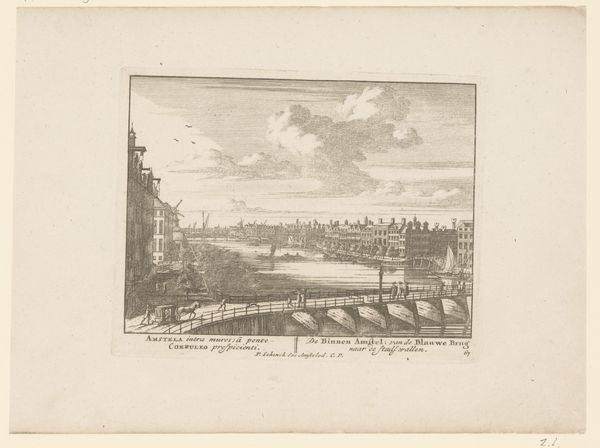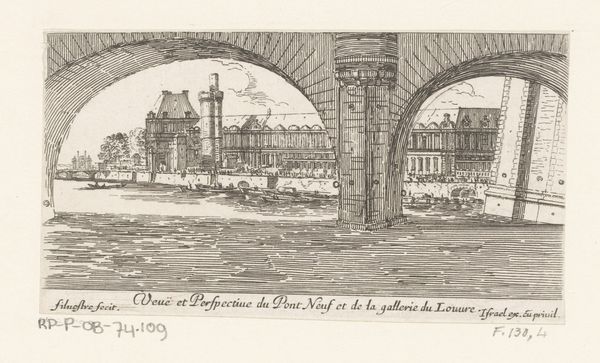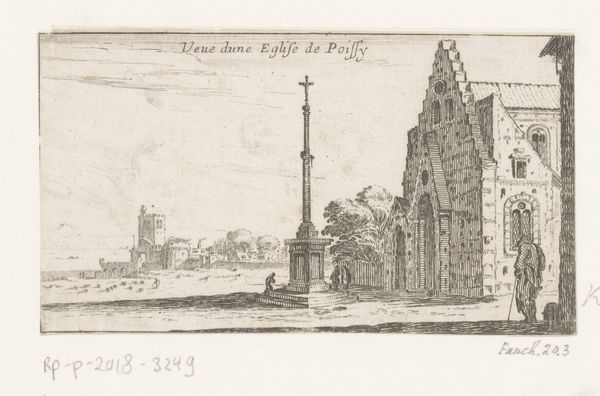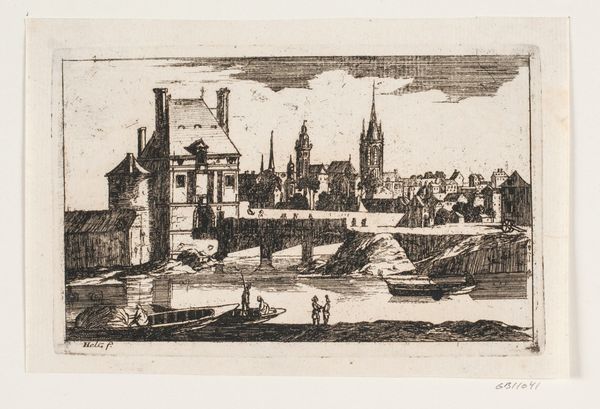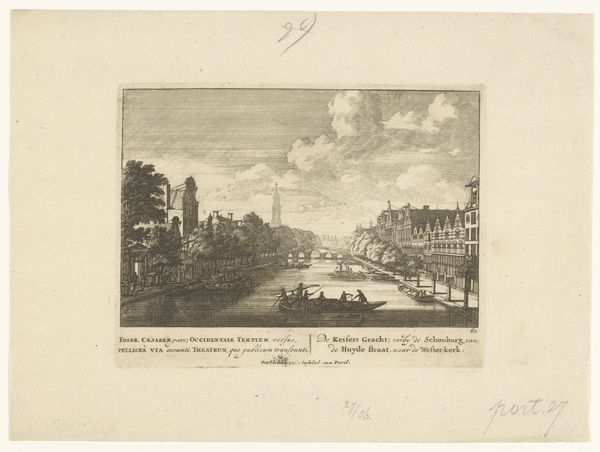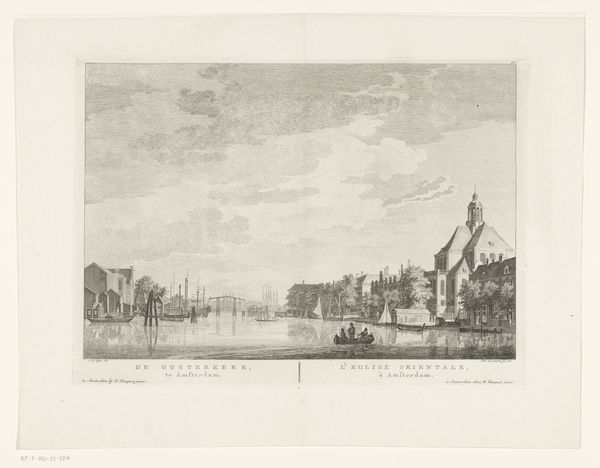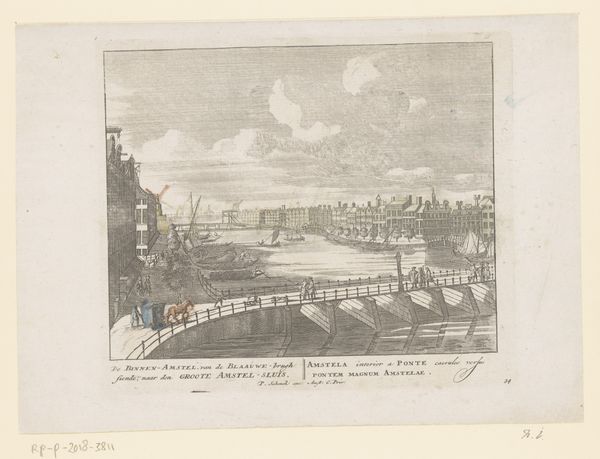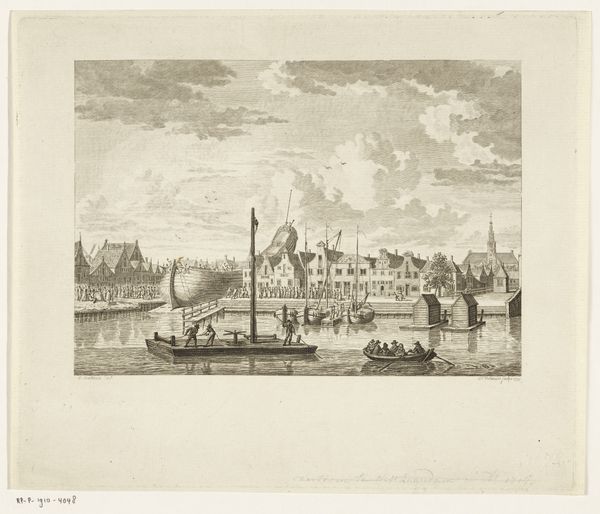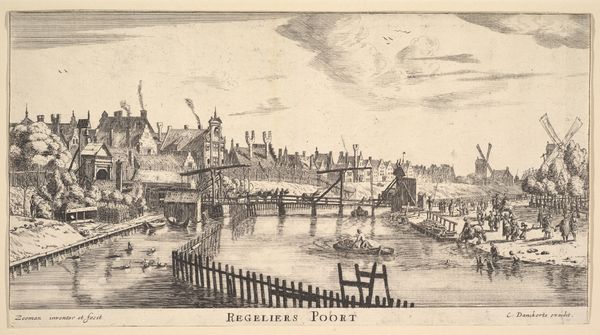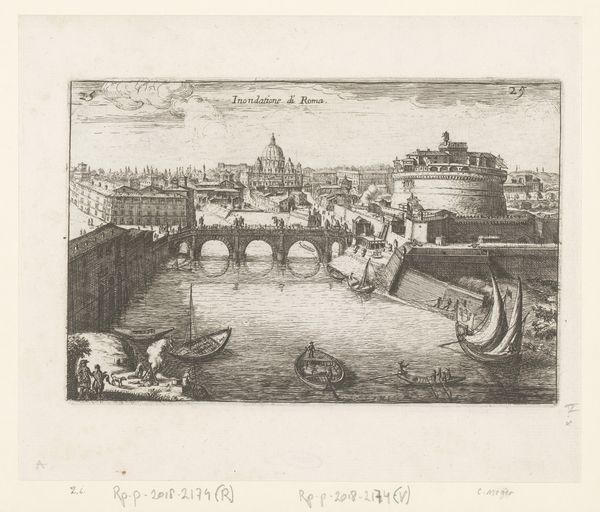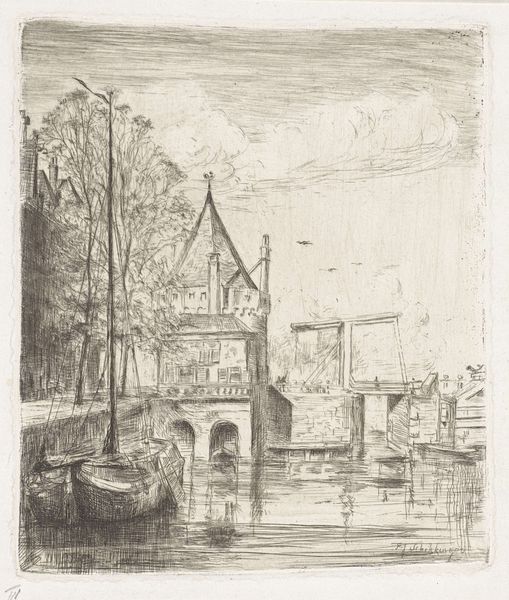
drawing, etching, ink
#
drawing
#
baroque
#
etching
#
landscape
#
ink
#
cityscape
Dimensions: height 87 mm, width 146 mm
Copyright: Rijks Museum: Open Domain
Curator: This intricate drawing, rendered in ink using etching techniques, presents a view of the entrance to the Château de Tanlay. The work is by Israel Silvestre and is estimated to have been created between 1631 and 1661. Editor: Immediately, I notice how the composition balances architectural precision with a sense of idyllic serenity. The water, the reflections, the little ducks, all lend it a very pleasant atmosphere. But tell me, what meanings do you find embedded here? Curator: Silvestre’s landscapes often served to monumentalize the subject, idealizing aristocratic power through its architecture and environment. Castles, of course, represent not only physical might but also the established social order. Even the reflection doubles that sense of dominance. Editor: Interesting. When you consider the etching process—the labor involved, the acid, the press—it adds a layer of understanding. This wasn't merely a quick sketch; it was a deliberate act of production intended for a wider audience, potentially reinforcing that very power structure. The material says as much as the imagery, perhaps more. Curator: The carefully chosen details, like the statues atop the gate and the figures strolling along the distant walls, are all placed with symbolic intention. It's a deliberate construct designed to communicate status and permanence. Remember that Baroque art employed imagery to elicit specific emotional responses and project ideological narratives. Editor: Absolutely. And those formal gardens barely visible in the background also point to human intervention in nature, taming it for pleasure and control. We see a control over materials manifested into political power on full display. Curator: Indeed. Looking at it through a historical lens enriches our appreciation, doesn't it? Editor: It certainly provides some depth of field to the image's narrative and its construction.
Comments
No comments
Be the first to comment and join the conversation on the ultimate creative platform.

